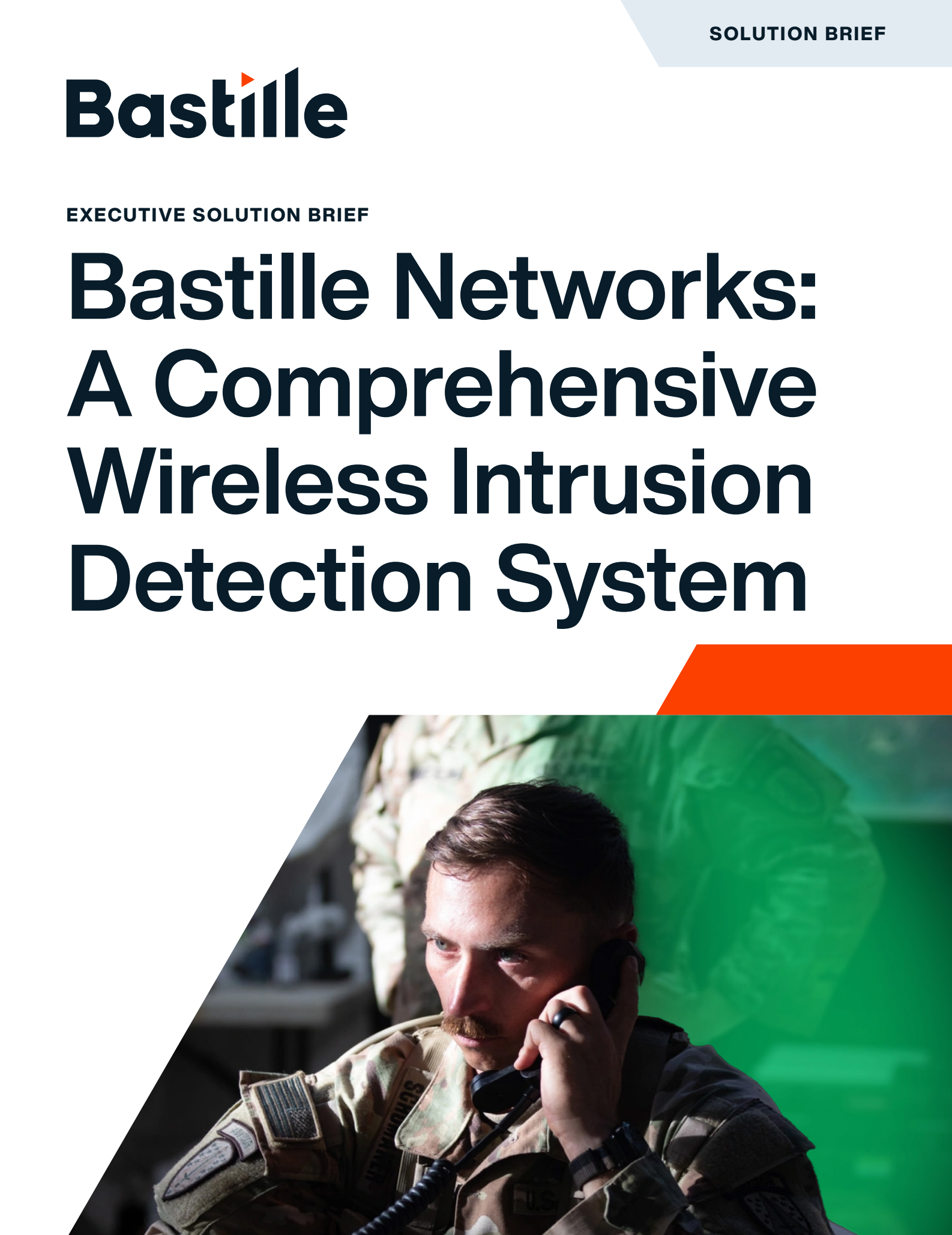
Table of Contents
Within the dynamic landscape of federal cybersecurity, some of the most dangerous threats are those that evade detection altogether. As federal agencies adopt an increasing range of wireless technologies, they also expand their attack surface in ways that traditional security systems cannot monitor. Most cybersecurity tools offer no visibility into the radio frequency (RF) environment, leaving security teams unaware of critical activity in their physical airspace.
Omitting Wireless Intrusion Detection Systems (WIDS) from an agency’s defensive posture creates a significant and often unmonitored exposure that adversaries are increasingly poised to exploit.
The Financial Fallout of Wireless-Based Breaches
Wireless-originating breaches are especially costly due to their stealth and persistence. For federal agencies, consequences often include:
- Remediation costs reaching into the millions
- Operational delays or complete mission halts
- Reputational damage undermining public trust
- Legal exposure from regulatory non-compliance
- Loss of contracts or security credentials
According to IBM’s 2023 Cost of a Data Breach report, the average breach in the public sector exceeds $2 million. This figure does not account for impacts from classified data leakage or mission-critical disruptions. A single unauthorized transmission within a Sensitive Compartmented Information Facility (SCIF) could inflict exponentially more significant harm than a typical phishing campaign.
Gaps Left by Traditional Security Architectures
Cybersecurity stacks built around firewalls, endpoint protection, and encryption serve essential functions, yet none provide visibility into the RF spectrum. While traditional tools can detect malware, log access attempts, and encrypt files, they cannot observe:
- Unauthorized transmissions in secure zones
- Rogue wireless access points
- RF-based surveillance tools
- Jamming signals disrupting operational systems
These limitations create blind spots that only systems explicitly designed for RF monitoring and intrusion detection can address.
Wireless Blind Spots in Federal and DoD Facilities
Federal installations, including SCIFs, defense contractor sites, and operational command centers, routinely operate in RF-dense environments. Without dedicated RF monitoring:
- Unauthorized devices remain undetected
- Shielding failures go unnoticed
- Real-time wireless threats cannot be verified or investigated
These vulnerabilities present persistent risks, especially in environments with physical access controls but absent RF surveillance.
WIDS as a Strategic Investment
WIDS is not merely a supplemental tool but a foundational operational risk management component. When properly deployed, WIDS supports:
- Prevention of wireless-originating breaches
- Reduced investigation and remediation costs
- Improved operational resilience and uptime
- Enhanced situational awareness for physical security teams
- Strengthened alignment with federal compliance frameworks
Rather than incurring costs, WIDS helps avoid them by preventing incidents and minimizing their impact.
Operational Downtime and Mission Disruption
Wireless disruptions can have serious operational effects, including:
- SCIF evacuations
- Network shutdowns
- Delayed briefings
- Interrupted logistics coordination
Every moment spent responding to or recovering from wireless interference represents lost productivity, degraded mission outcomes, and, in many cases, avoidable costs.
Regulatory Exposure and Compliance Gaps
Federal agencies must comply with stringent cybersecurity mandates, such as:
- NIST SP 800-53 (e.g., SI-4, PE-20)
- CNSSI 1253
- DoD Risk Management Framework (RMF)
Failure to detect and manage RF-based threats puts organizations at risk of:
- Revocation of Authority to Operate (ATO)
- Contract suspension
- Clearance disputes
- Fines and audit failures
WIDS directly supports the continuous monitoring and control requirements embedded in these frameworks.
The Threat of Unmanaged Wireless Devices
Shadow devices, including personal electronics and unregistered wireless emitters, pose unique risks. These devices may:
- Be carried in inadvertently by staff
- Remain in place across shift changes
- Transmit without user knowledge
- Be repurposed for data exfiltration or disruption
Without WIDS, these devices remain invisible. Organizations cannot track or manage their presence and behavior until consequences emerge.
Bastille: Advanced Wireless Intrusion Detection for Federal Environments
Bastille delivers a Wireless Intrusion Detection System that is purpose-built for federal agencies, SCIFs, and high-security operations. The solution provides 100% passive monitoring and covers the full RF spectrum from 100 MHz to 7.125 GHz. Bastille extends traditional cybersecurity stacks by delivering:
- Zone-based RF detection and mapping
- Real-time wireless asset discovery and inventory
- Device classification across Wi-Fi, Bluetooth, Zigbee, cellular, and more
- Detection of spoofed or transient emitters
- RF localization for precise device location mapping
Comprehensive Wireless Asset Management
Beyond detection, Bastille provides agencies with continuous wireless asset inventory. This capability allows organizations to:
- Maintain real-time records of active RF devices
- Detect new or transient emitters
- Classify both authorized and unauthorized hardware
- Create RF zoning maps for high-security areas
This unified visibility supports Zero Trust implementations and SCIF modernization initiatives.
Operational Use Case: Fortune 100 Defense Contractor
At a large R&D site supporting DoD contracts, a defense contractor experienced unexplained disruption to its autonomous inventory systems. Despite strong endpoint and network controls, traditional tools failed to identify the issue.
Deployment of Bastille’s WIDS revealed that a consumer Wi-Fi hotspot, inadvertently left active in a visitor’s bag, interfered with RF channels critical to internal sensors. The facility quickly isolated and resolved the problem using Bastille’s localization tools, avoiding costly downtime and validating the need for real-time RF visibility.
Conclusion: Visibility Is the First Step to Security
Wireless threats are persistent and evolving, but they are also invisible to conventional cybersecurity tools. Without the ability to monitor airspace, federal agencies operate at a disadvantage.
By incorporating Wireless Intrusion Detection Systems, security teams gain the visibility needed to identify, respond to, and prevent wireless attacks before they compromise operations or compliance. In an era where threats are increasingly RF-based, visibility is not optional—it’s foundational.
Ignoring WIDS isn’t cost-saving. It’s costly. Learn how Bastille can help you gain control of your airspace today: Wireless Intrusion Detection System or explore Wireless Discovery & Asset Inventory for complete RF visibility.
Frequently Asked Questions on WIDS Cost and ROI
What are the financial risks of not using WIDS?
Agencies face costly disruptions, data breaches, and regulatory violations if RF threats go undetected. These costs often surpass the investment required to deploy WIDS.
How does WIDS reduce long-term cybersecurity costs?
By catching threats early, WIDS minimizes the need for incident response, limits breach impact, and reduces system downtime. It also supports audit readiness and regulatory compliance.
Is WIDS a federal requirement?
While not always mandatory, WIDS directly supports NIST SP 800-53, CNSSI 1253, and RMF controls. Many agencies use WIDS to satisfy monitoring and access control requirements and to secure their ATO status.
What distinguishes Bastille from other WIDS platforms?
Bastille offers passive, zone-based RF detection with extensive spectrum coverage, real-time device inventory, and precise localization capabilities. In addition to Wi-Fi, it covers Bluetooth (classic and Low Energy), cellular, and IoT protocols. The system excels in secure federal environments where airspace visibility is mission-critical.
Can Bastille detect all wireless emitters, including transient or rogue devices?
Yes. Bastille’s platform detects a wide range of RF signals, including personal electronics and unauthorized sensors, regardless of whether they connect to network infrastructure.

